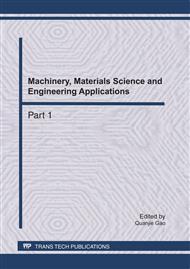p.514
p.519
p.526
p.532
p.537
p.542
p.548
p.552
p.558
Synthesis and Structures Characterization of Nano NiO by PDCG Technology
Abstract:
Nano NiO is prepared by Parallel Dropping Concentration Gradient method(PDCG)with nickel nitrate hexahydrate,ammonia and Tween-80.The structures and morphology of Ni(OH)2•nH2O and NiO are characterized by DSC,XRD,SEM and FTIR.The results shows that because of the desorption of solvent and physical adsorbed water, the weight of precursor changes slowly during 40-280°C, while the weight of compound material changes quickly during 280-480°C because of the loss of chemical adsorbed water and the decomposition of Ni(OH)2. Above 480°C,the weight of sample changes unobviously. SEM shows that nano NiO soft gathered to form particles under the effection of surfactant. XRD shows that nano NiO prepared by PDCG was cubic crystal and with an average particle size of 3.8 nm.
Info:
Periodical:
Pages:
537-541
Citation:
Online since:
April 2011
Authors:
Keywords:
Price:
Сopyright:
© 2011 Trans Tech Publications Ltd. All Rights Reserved
Share:
Citation:


